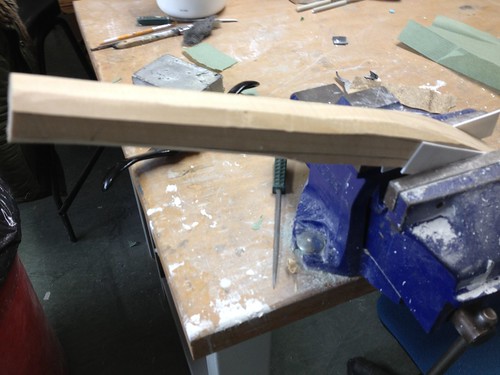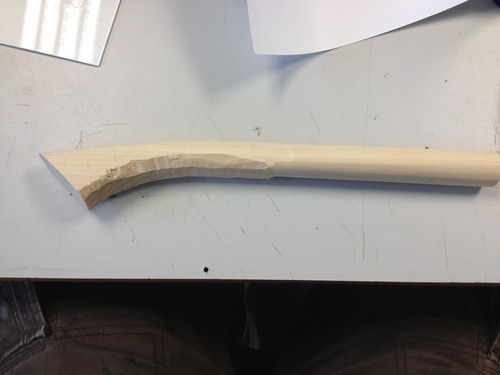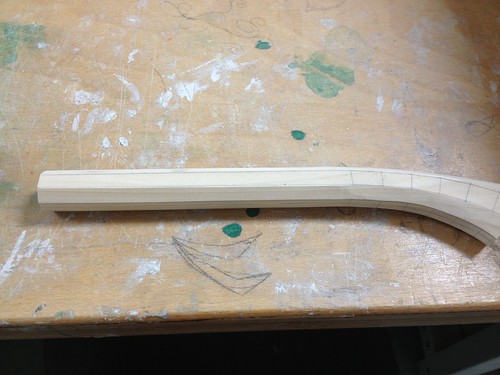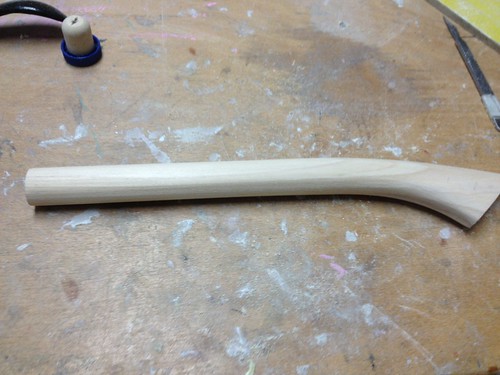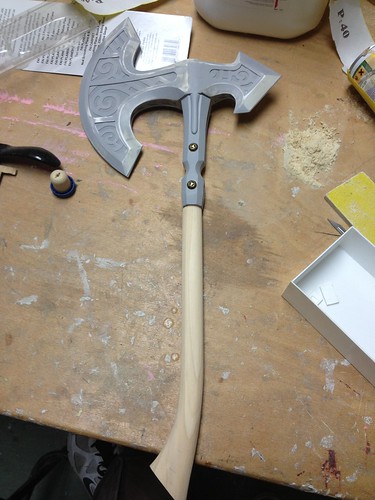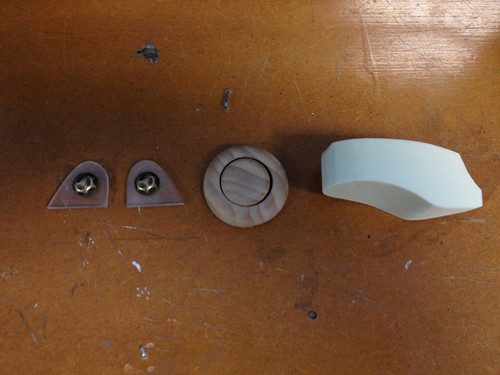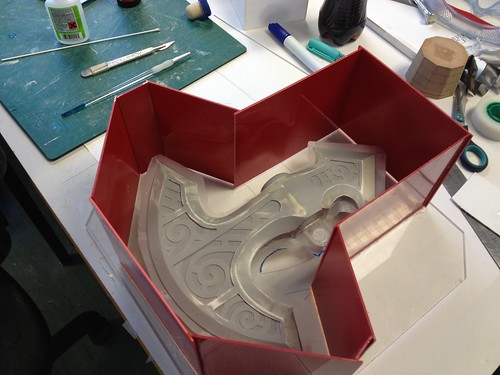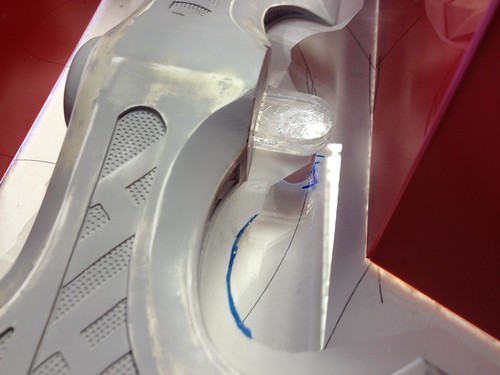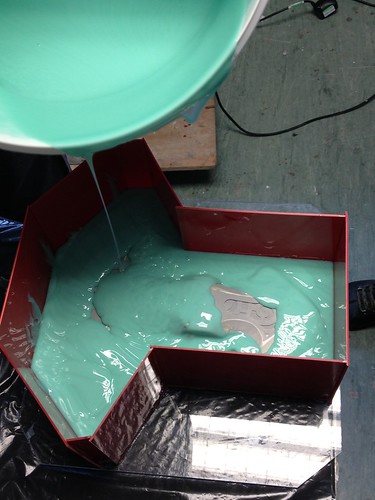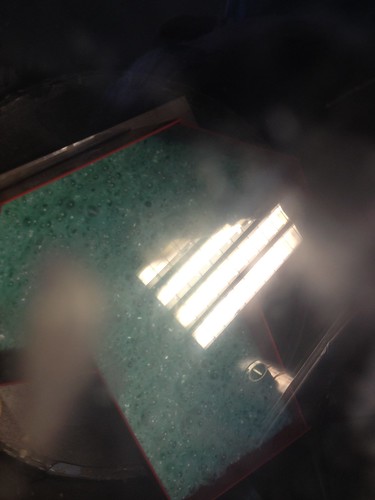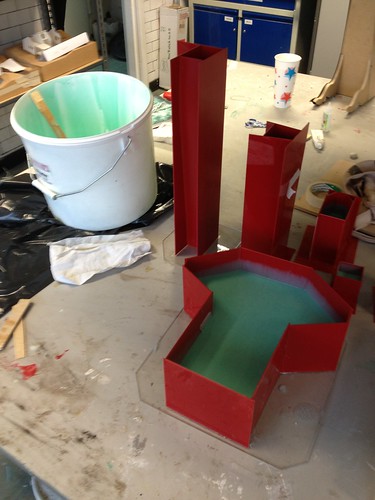NeonHybrid
Member
Hey so I loved the look of the axe in game and when I had the opportunity to make one I jumped on it.
I'm a model making student so I'm lucky to have access to one of the best stocked workshops available. I've been studying for about a year and a half with very little experience in model making before hand. Anyway enough about me and onto the interesting part the pictures.
For those not familiar with Skyrim this is the axe I'm working on.
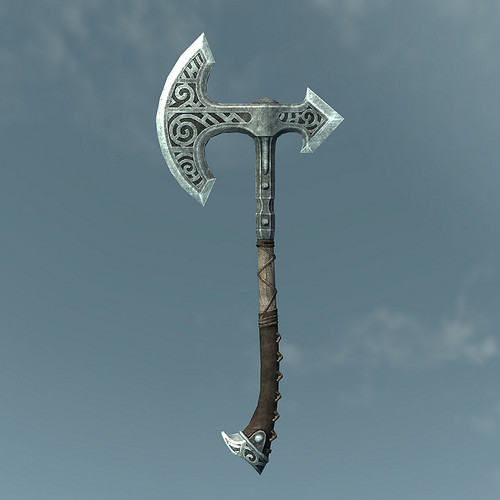
IMG_0560 by NeonHybrid, on Flickr
I started with drawing out a design in auto cad so that I could pull it apart and use it for laser cutting.
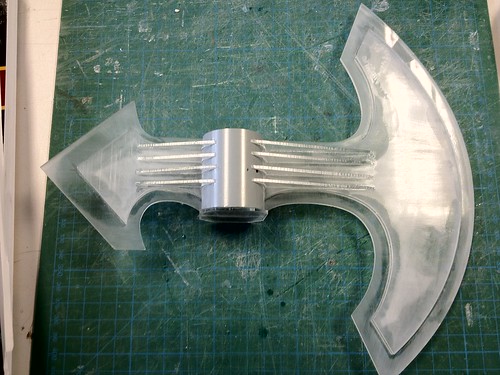
IMG_0569 by NeonHybrid, on Flickr
The laser cut styrene was a bit tricky to get right as it tends to melt if you use to high a power level on the laser. To get around this and to avoid cutting to wide a channel in the styrene I used a low power and cut a bout 3 times for the 1.5mm and about 5 for any 0.5mm
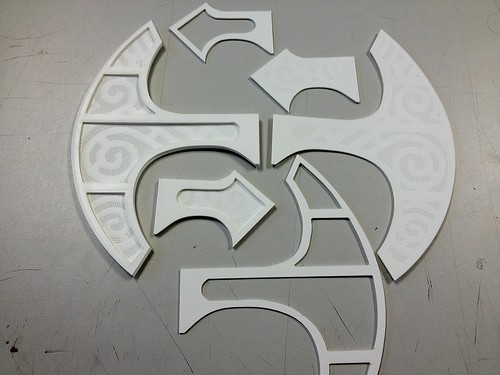
IMG_0571 by NeonHybrid, on Flickr
In case any one cares there are about 1300 dots on each side of the head which took about 4 hours to draw in auto cad thankfully it took minutes to etch them with the laser.

IMG_0585 by NeonHybrid, on Flickr
Now with body filler.

IMG_0586 by NeonHybrid, on Flickr
And after some cleaning up
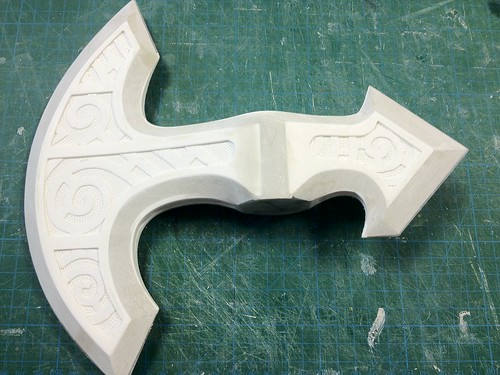
IMG_0587 by NeonHybrid, on Flickr
The neck before my tutor looked at it and said wouldn't it look better if the styrene flared out at the top like in the design.
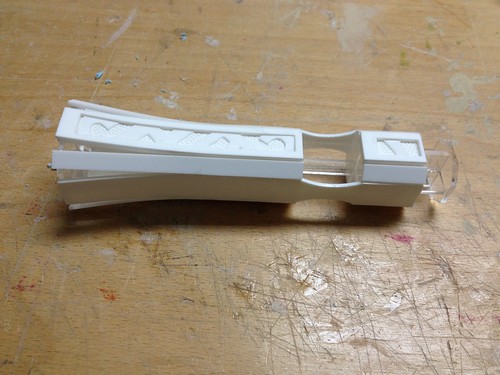
IMG_0592 by NeonHybrid, on Flickr
And after I tore all the styrene off and cursed his name. :lol The core is made up of acrylic plates held apart with a cross made of acrylic. when I got home at the end of the day I thought of a much better way to do it but it worked out in the end so hey.
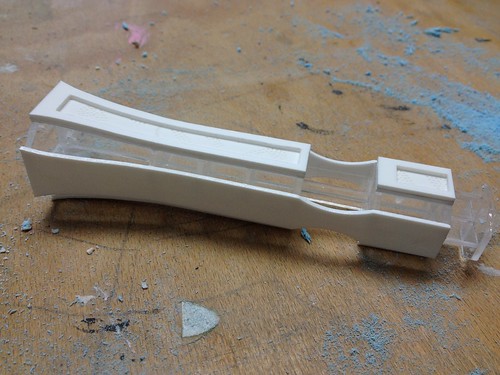
IMG_0596 by NeonHybrid, on Flickr
A little body filler and some sanding and I have this.
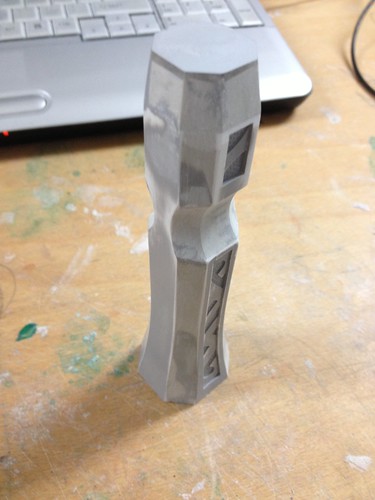
IMG_0600 by NeonHybrid, on Flickr
And finally my progress so far.

IMG_0603 by NeonHybrid, on Flickr
I have about 2 weeks to finish this project so hopefully I can provide progress pictures regularly.
What do you all think.
I'm a model making student so I'm lucky to have access to one of the best stocked workshops available. I've been studying for about a year and a half with very little experience in model making before hand. Anyway enough about me and onto the interesting part the pictures.
For those not familiar with Skyrim this is the axe I'm working on.

IMG_0560 by NeonHybrid, on Flickr
I started with drawing out a design in auto cad so that I could pull it apart and use it for laser cutting.

IMG_0569 by NeonHybrid, on Flickr
The laser cut styrene was a bit tricky to get right as it tends to melt if you use to high a power level on the laser. To get around this and to avoid cutting to wide a channel in the styrene I used a low power and cut a bout 3 times for the 1.5mm and about 5 for any 0.5mm

IMG_0571 by NeonHybrid, on Flickr
In case any one cares there are about 1300 dots on each side of the head which took about 4 hours to draw in auto cad thankfully it took minutes to etch them with the laser.

IMG_0585 by NeonHybrid, on Flickr
Now with body filler.

IMG_0586 by NeonHybrid, on Flickr
And after some cleaning up

IMG_0587 by NeonHybrid, on Flickr
The neck before my tutor looked at it and said wouldn't it look better if the styrene flared out at the top like in the design.

IMG_0592 by NeonHybrid, on Flickr
And after I tore all the styrene off and cursed his name. :lol The core is made up of acrylic plates held apart with a cross made of acrylic. when I got home at the end of the day I thought of a much better way to do it but it worked out in the end so hey.

IMG_0596 by NeonHybrid, on Flickr
A little body filler and some sanding and I have this.

IMG_0600 by NeonHybrid, on Flickr
And finally my progress so far.

IMG_0603 by NeonHybrid, on Flickr
I have about 2 weeks to finish this project so hopefully I can provide progress pictures regularly.
What do you all think.


